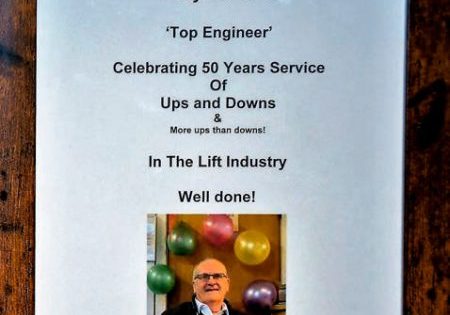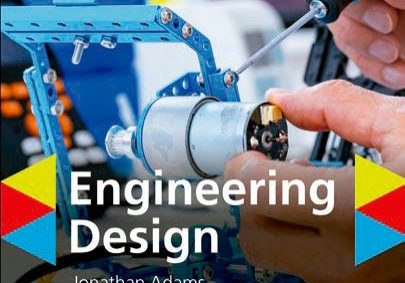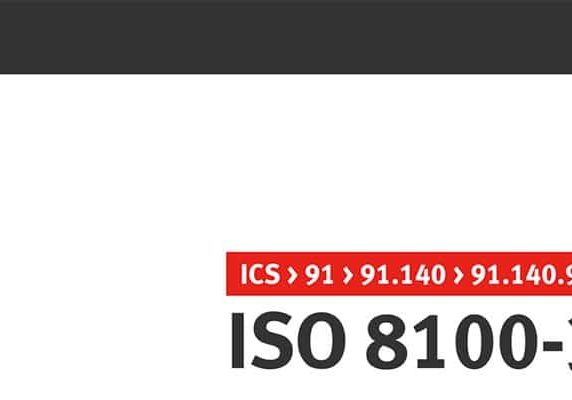An examination of the distinction between, and overlap of, the two roles
by Colin Craney
I have followed the “marking your own homework” debate in the 104 and 105 editions of ELEVATOR WORLD UK, and note that one thread of the discussion proposes that lift engineers might make the best competent persons. I recognise a clear cultural difference between the two roles, and the characteristics and approaches of the people who tend to inhabit them.
I do not suggest that a lift service engineer cannot become an effective competent person. I do, however, argue that the competent person has a different mindset from that of the lift service engineer — and quite rightly so. The competent person does not maintain lift equipment. The duty of the competent person lies in the detection, assessment and reporting of defects.
Competent persons do not maintain lifts and are not lift service engineers (albeit some could, no doubt, adapt to that role). Lift service engineers are not, in my experience, competent persons (although some could undoubtedly fulfill the role).
The central question relates to the independence of the competent person which, in my experience, is often misunderstood. The “independence” requirement arises in the context of making “objective decisions” — that recommendations are to be made “without fear or favour.” Just as the term “competent person” is not defined in the regulation, there is no requirement that the competent person should be independent of the employer (or of anyone else, for that matter). That requirement arises in the Health and Safety Executive (HSE) Guidance to Lifting Operations and Lifting Equipment Regulations (LOLER), such that the competent person “must be sufficiently independent and impartial to allow objective decisions to be made.”
The original 1937 Regulation arose in the context of what was then our industrial society. It is, perhaps, unsurprising that there was no specific provision for independence. The underlying concern was that of workplace safety with the accompanying assumption that this would be determined by a “competent person,” in effect a trained engineer, rather than management.
Concerns in this respect were recognised in the 2014 review of LOLER through the introduction of additional provisions at 299 of the Guidance. These require that the duty holder’s risk assessment should consider and record risks arising whenever maintenance and thorough examination are undertaken by the same party, in effect seeking to formalise the requirement through the Management of Health and Safety at Work Regulations 1999.
I suggest that the reality of the concern expressed relates more to an appearance of a lack of independence, to the effect that the perception is that the competent person should not only act independently, but should be seen as independent, which is not a requirement of the regulation, and is, in effect, different. In the absence of regulatory revision, what has developed is, I think, a displacement or reconstruing (by way of evolving sociological expectation) the original regulatory intent.
In the absence of a regulatory requirement for independence, the duty must fall upon the individual and, I would suggest, it is a professional and moral duty. Whilst the doctrine of vicarious liability applies to a competent person undertaking thorough examinations whilst in the employ of another, the reality is that the duty lies with the individual. Indeed, it cannot be otherwise, in that it is the individual who undertakes the examination and who endorses the report and whose duty it is to notify the duty holder of defects and issue the report in accordance with Regulation 10.
It is perhaps hardly surprising that there may be shortfalls in regulations 9 and 10 of LOLER. The regulation was made in 1937 for application in the context of a different socioeconomic environment, and has remained almost unchanged ever since, with insufficient recognition of the extensive technological, commercial and socioeconomic change that has occurred over the past 80 years.
Some time ago, I was asked to inspect a number of escalators and identified what were clearly severely deteriorated safety-critical components. When the same escalators were examined shortly after my inspection, these defects were not reported by the competent person. I ask myself two questions:
- Did the competent person examine these components and reach a different conclusion as to their condition?
- Did the competent person not examine these components?
I conclude that the competent person did not examine the components, as I have no doubt that, had the condition of these been identified to him, he would have insisted upon immediate action. This was resolved by the employer and maintenance contractor undertaking the necessary remedial works.
Similarly, following thorough examinations a few years ago, a set of ropes for a high-speed, high-rise lift group was noted to be rouged, but serviceable, with otherwise clear reports on the lifts. The underlying reality was of more serious issues with the rouged ropes deteriorating rapidly, such that they required replacement within a few weeks of the examination.
Inspection of another of the machines revealed a traction sheave worn to the extent that the undercut groove profiles had bottomed out to a U profile. Unfortunately, the client agent, on the basis of advice from the facilities manager and the defect-free LOLER reports, had reduced the contract coverage from comprehensive to a consumable-parts-only basis and was stuck with the cost of two high-rise lift rope/sheave renewals. This was embarrassing for the agent, maintenance contractor and competent person, and was subsequently resolved through a process of negotiation between the employer and maintenance contractor.
In such situations, there is little to be gained by pursuing the competent person. The matters in question were not differences in technical or professional opinion as to component condition, but, quite clearly, omissions in reporting. And, whatever approach to remedy was adopted, the result in each case was of immediate remedial works.
I do not doubt the competence of the competent persons in question. We are all human and prone to error. When such instances arise, we learn from our mistakes and focus on the particular component during all future examinations. In this respect, we develop something of “a bee in the bonnet.” (Speak to any experienced lift engineer or competent person and one finds that experience arising as a result of our mistakes and errors becomes more deeply ingrained than that of our successes.)
Back in the 1970s and 1980s, it was more common for maintainers providing comprehensive maintenance service to question the judgement (not competence) of the competent person in terms of suspension rope condition and similar issues. More often, the basis was that further operational life could be obtained from the condemned components. These challenges were rarely successful, except in cases that did — and still do — arise in relation to administrative errors in reports.
Whilst it is suggested in the debate that there is little opportunity to challenge or correct an inspector’s report, my experience is that the great majority of competent persons are open to discussion and quite readily prepared to provide an explanation of defects raised in reports.
In each of the situations described here, I question why the maintainers failed to identify the deficiencies and rectify or report them. In this respect, I find the criticisms of the inspection sector (which I encounter too often in social media and similar contexts) to be unhelpful and inappropriate. I would like to see a more cooperative approach, together with an improved understanding of roles and requirements, by all stakeholders across the industry.
Whilst the doctrine of vicarious liability applies to a competent person undertaking thorough examinations whilst in the employ of another, the reality is that the duty lies with the individual.
It can be beneficial to consider such matters using an alternative context. The relationships may be considered in terms of a quality model, in which the role of the competent person falls under that of quality management. The key actors in the structure are the duty-holder, who bears ultimate responsibility, but who more often lacks the technical capacity to undertake the maintenance in-house, and the maintenance contractor, who is appointed by the duty-holder and who possesses the technical capacity to undertake the maintenance on behalf of the duty holder. Jointly, these two parties exercise control over the condition and compliance (or quality) of the installation.
In an ideal world, the competent person would have nothing to report, other than perhaps only deficiencies that arise as a result of recent extraneous interventions (rubbish deposited in pits, vandalism, etc.) and which were, at the time, unknown to the duty holder and maintenance contractor. The maintenance contractor would maintain the installation in accordance with good practice and applicable regulation and would report any deficiencies outside of its maintenance/repair and remit them to the duty holder for action. The duty holder would address all such deficiencies by instructing the maintenance contractor or other suitable party. Thereafter, the competent person would report, much as he or she does under the current requirement, only in relation to meeting the regulatory duty under LOLER. One may reflect on the fact that it is when this approach fails or breaks-down that the competent person is called upon to intervene.
The reality is, however, that we have moved forward. One of my early jobs back in the 1970s was to assist in the thorough examination of lifts on a large site. I drove the lift from inside the car whilst the competent person, from the car tops, undertook the examination of the high-speed gearless lifts. No car top controls, no car top balustrades, no shaft lighting and a single fixed pit ladder to access pits (by moving between unseparated pits in common shafts). Thankfully, conditions have improved by a long measure since those days.
As an industry, we continue to fail the inspection sector in terms of design and manufacture in making equipment accessible for examination. Back in the days of PM7, it was recognised that the examination of door interlocks should be possible without removing covers. Regardless of provisions of the Supply of Machinery (Safety) Regulations and the EN 81-1/2 and -20 standards, the design of much of the machinery guarding I see leaves a great deal to be desired (what guarding there was in the 1970s was well designed), with opaque sheetmetal panels that prohibit visual inspection and guard designs that require extensive gymnastic maneuver and effort, and/or separate lifting equipment to remove and refit.
It has been suggested in the debate that people with no experience in lifts have been trained over a four-to-five week period to undertake the competent person role. That is not a situation I recognise. My experience is that a significant proportion of the cadre of inspectors is formed of engineers drawn from other engineering sectors who hold a minimum Level 4 engineering qualification, effectively a Higher National Certificate/Higher National Diploma standard, and who I understand are provided with three months’ theoretical and on-the-job training specific to their particular discipline. The larger inspection firms also retain in-house technical support departments that support their inspectors.
I suggest that engineers with this background and training meet the competent person definition in having “such appropriate practical and theoretical knowledge and experience of the lifting equipment to be thoroughly examined as will enable them to detect defects or weaknesses and to assess their importance in relation to the safety and continued use of the lifting equipment.” It is not necessary to be a lift service engineer to meet this duty, although I believe that a competent person should be a qualified and suitably trained engineer.
Overall, the inspection firms and their competent persons are responsible, treat their duties seriously and, in my experience, meet the definition provided in the Guidance to LOLER.
Get more of Elevator World. Sign up for our free e-newsletter.







